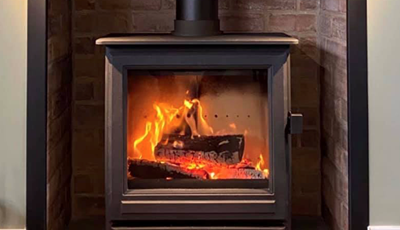We are often asked the question "Which is better, Wood or Multi Fuel Stoves?"
It is an impossible question to give a definitive answer to, both wood burning and multi fuel stoves have advantages and disadvantages and we have created this blog post to outline them so you the customer can make an informed choice on what is best for you and your home.
Firstly the difference between a wood burning stove and a multi fuel stove is more often than not wood burning stoves do not have a grate on which the fuel burns. The wood sits directly on the base of the stove whereas a multi fuel stove has a grate on which the fuel sits. This is due to the way each of the fuels burn, wood burns best without a grate but other types of fuel require the air supply to enter beneath the fuel bed, hence the grate.
As a result of the above, generally wood burning stoves have a bigger combustion chamber compared with multi fuel stoves. This is certainly the case where the same model is available in both options.
The next thing to consider is the fuel itself. Wood burning stoves only burn wood. The wood should be clean and dry (below 20% moisture content) and free of any coatings or treatments. We recommend sustainably sourced British Hardwood.
Coal (the old fashioned stuff) is to be banned on the 1st January 2022 and only smokeless coal will be permitted.
Advantages of wood:
- Readily available
- Burns with a lovely flame pattern
- Clean to handle
- Easy to store
Advantages of Smokeless Coal
- Burns longer than wood
- Readily available
Disadvantages of wood:
- Max burn time (depending on quality) 3 hours
Disadvantages of coal:
- Dirty to handle
- Burns with a red glow rather than an attractive flame pattern after approximately 10 minutes
All in all there are lots of factors to consider and only you the end user can make the right decision for you
Our Verdict: WOOD BURNING




